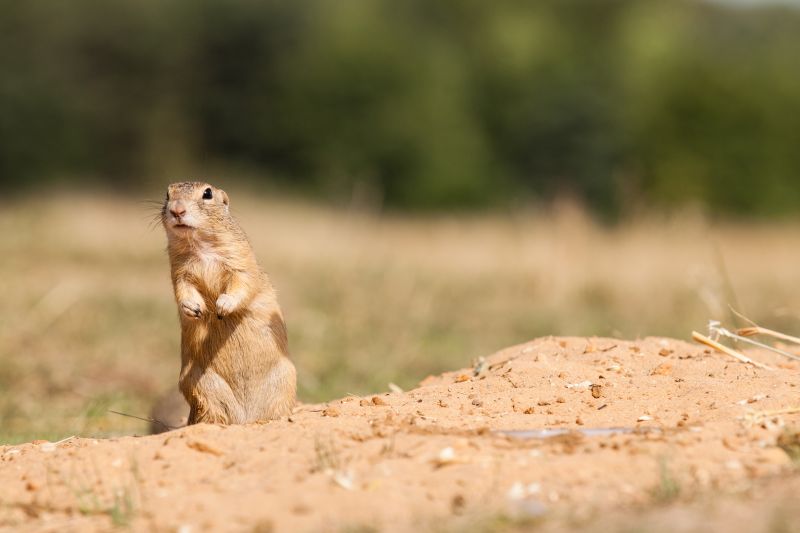Expert Picks For Gopher Control Products That Work
Choose from our curated selection of effective gopher removal solutions trusted by professionals and homeowners alike.
 Gopher issues can pose significant challenges for homeowners and gardeners alike, often leading to underground tunnels that damage lawns, gardens, and landscaping features. Addressing gopher problems requires effective tools and products designed to target these burrowing pests without causing harm to the surrounding environment. A variety of solutions exist, ranging from physical barriers and traps to repellents and baiting systems, each suited to different levels of infestation and property sizes.
Gopher issues can pose significant challenges for homeowners and gardeners alike, often leading to underground tunnels that damage lawns, gardens, and landscaping features. Addressing gopher problems requires effective tools and products designed to target these burrowing pests without causing harm to the surrounding environment. A variety of solutions exist, ranging from physical barriers and traps to repellents and baiting systems, each suited to different levels of infestation and property sizes.
Top Overall Option
Underground Barrier Fencing System
An underground barrier fencing system is designed to create a physical barrier that prevents gophers from burrowing into designated areas. These systems typically consist of durable, galvanized mesh or hardware cloth installed around gardens, flower beds, or lawns. Proper installation involves burying the fencing several inches below the soil surface and ensuring it extends outward to block tunnel entrances. This method offers a non-lethal, long-term solution to gopher intrusion, making it suitable for those seeking a proactive approach to landscape protection.
Types of Products For Gopher Removals
Gopher Traps
Various trap designs are available for capturing gophers directly, including tunnel traps and box traps. These traps are typically baited and placed in active tunnels, providing a targeted removal method.
Bait Stations
Bait stations contain poison bait formulated specifically for gophers, offering a way to reduce populations through targeted feeding.
Underground Fencing
Physical barriers made of galvanized mesh or hardware cloth installed around problem areas to prevent gopher entry.
Repellents
Ultrasonic or scent-based repellents designed to discourage gophers from inhabiting treated areas.
Natural Deterrents
Plant-based or homemade solutions that may help repel gophers without chemicals.
Gopher Poison Baits
Chemical baits formulated to attract and poison gophers, used with caution and in accordance with safety guidelines.
Sound Emitters
Devices that emit ultrasonic sounds intended to disturb gophers and encourage them to vacate tunnels.
Tunnel Collars
Devices placed around tunnel entrances to block or collapse active burrows.
Gopher Repellent Sprays
Liquid repellents applied to soil to make the area less attractive to gophers.
Live Traps
Humane traps that capture gophers alive for relocation or humane removal.
Popular Choices
Effective and widely used for targeted gopher removal, these traps come in various designs to suit different tunnel types.
Popular for their targeted approach, bait stations help control gopher populations with minimal disturbance.
A favored long-term solution to prevent gopher intrusion in specific areas like vegetable gardens or flower beds.
Devices emitting ultrasonic sounds are commonly used to deter gophers without chemicals.
Chemical baits remain a common option for reducing gopher activity, used with caution.
Plant-based repellents and homemade solutions are gaining popularity for those seeking non-chemical options.
Ultrasonic sound devices are often chosen for their easy application and non-lethal approach.
Used to block active tunnels, these collars are popular for quick, localized control.
Humane trapping options are often favored by those who prefer non-lethal methods.
Liquid repellents are frequently used to make soil less attractive to gophers.
Mesh barriers are commonly installed around gardens to exclude gophers effectively.
Formulated to attract gophers, these baits are popular for active infestations.
Selecting the right product involves understanding the specific behavior of gophers and the layout of your property. Physical barriers such as underground fencing can be highly effective in preventing gophers from entering certain areas, especially when installed properly around gardens or flower beds. Traps and bait stations are popular for actively removing gophers, offering targeted control that can reduce populations over time. Additionally, sonic repellents and natural deterrents are available for those seeking non-lethal options, although their effectiveness can vary.
When considering products for gopher removal, it’s important to evaluate your property’s size, the extent of the gopher activity, and your preferences for humane or chemical solutions. Proper installation and consistent use of these tools can significantly improve their effectiveness. Always follow manufacturer instructions and local regulations when deploying any pest control product to ensure safety and compliance.
Ultimately, a comprehensive approach combining physical barriers, trapping, and repellents often yields the best results. Regular monitoring and maintenance are key to managing gopher populations and protecting your landscape from ongoing damage. With the right selection of products and proper application, homeowners can address gopher issues efficiently and effectively.
Key Buying Considerations
- Property size and extent of gopher activity determine the most suitable products.
- Decide between lethal and non-lethal options based on personal preferences and local regulations.
- Physical barriers like fencing require proper installation and maintenance for effectiveness.
- Traps and bait stations should be placed in active tunnels for best results.
- Consider the ease of use and installation when selecting products, especially for DIY projects.
- Check product safety and compliance with local pest control regulations.
- Durability and material quality are important for long-term outdoor use.
- Some products may require regular monitoring and maintenance to remain effective.
- Humane options like live traps are preferred by those seeking ethical control methods.
- Effectiveness can vary based on gopher population size and behavior, so combining methods may be beneficial.
- Cost and availability are practical factors influencing product choice.
- Read customer reviews and product descriptions to gauge suitability and effectiveness.
- Consider whether chemical or natural solutions align with your landscape management approach.
- Evaluate whether the product is suitable for use around children and pets.
